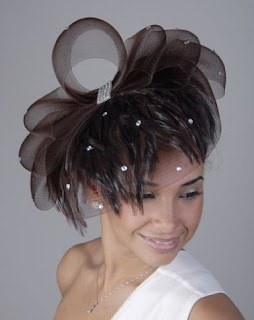 |
| The fascinator offers allure and intrigue. From Amazon |
A Veil of Elegant Mystery
Modern style fascinators - those frivolous, feathery headpieces that give women the look of an exotic bird and unlike hats, serve no real practical function but are designed purely for adornment - came into vogue in the 20th century with the eccentric headgear of the 1940s, when small, decorative headpieces were often combined with a net veil to give a woman a mysterious sense of allure. I guess they were meant to make us...fascinating.
 |
| Cocktail fascinator from Amazo |
In the 1940s fascinators were worn for both day and evening/cocktail wear, when they could be jazzed up with sequins and black beaded veils. These were worn high on the head, either slanting jauntily to one side or downward toward the forehead.
Still Popular
Fascinators are still popular, particularly for formal events such as cocktail parties, weddings or special race days. The Royals, in particular, seem enamoured with them, as they have, among others, been worn frequently by the Queen, Princess Diana, Beatrice and Eugenie and of late, William's squeeze, Kate, aka the Duchess of Cornwall.
 |
| Princess Diana in a 1980s fascinator. Image from Mail Online |
 |
| Yep, that's fascinating. Sarah Jessica Parker in a 2010 Philip Treacy creation |